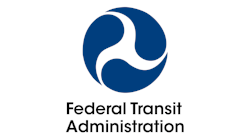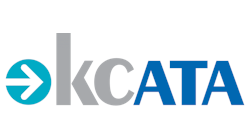During the American Public Transportation Association (APTA) 2017 Bus and Paratransit conference the session How Transit Agencies are Integrating Rideshare and Public Transportation, examined how to continue to alter the current model of transportation to incorporate and partner with ridesharing companies.
Brian Duggan, editor, Reno Gazette-Journal, moderated and introduced the session with the questions: "Is the definition of public transportation changing? What will it look like five years from now? Going forward with what we’re all doing right now how do you make sure that these partnerships are affordable down the line?"
Michael J. Lambert, deputy administrator of transit, Massachusetts Bay Transportation Authority (MBTA) said, "While the changes now are kind of in the margin, I know that the changes we see will seep into our regular service."
Agencies aren't the only ones working to offer more services, transportation network companies are focusing on how to develop, to make services more accessible and affordable.
"Transportation has changed rapidly in the last few years," Allison Wylie, transportation and mobility policy associate, Uber Technologies Inc. explained. "We're seeing really exciting things in London for example. One of the largest systems the Tube has extended its hours to nights and the weekend. What we saw with ride sharing was interesting, we saw riders getting on the Tube late at night and relying on Uber to get home for those last few miles. We are working with public transportation, but I think that we can do more."
But how do agencies work with these private companies in a way to benefit both parties?
"There has been so much change in our industry so that everything was allied," said Jameson T. Auten, chief, regional service delivery & innovations, Kansas City Area Transportation Authority (KCATA). "How do we deliver a connected service that customers are expecting today? I think that really staying committed to your core philosophy of the agency… There have to be little adjustments on each side."
You see movement in the area to deliver trips at the level that they need to be provided.
Paratransit and Accessibility
Auten explained that they created a pilot program to make accessible transit more available for the Kansas City area. "What we did was, we started a new program and we are working with taxi cabs and Transdev and it offers a more affordable program for our paratransit riders … What comes back is 5 percent of their fare to the authority. What we look at in these partnerships is to really get quality and make sure that these agencies are all being taken into consideration."
Lambert explained that MBTA is also undergoing an overhaul on its paratransit partnerships. "Our partnership grew out of both a success and failure in Boston, that has meant that both the span and the scope of the area is very very wide … we are on pace for our paratransit system to eclipse our bus system. Our goals were to offer a trip that costs us less ... our failure was that we first started with taxi, but because in the Boston area the taxis are managed locally, it was hard to get that data out. We looked to Uber and Lyft and discovered that they were perfect to set up our goals. The program is set up where the customer pays the first $2 of the trip and we will pay the rest up to a $15 ride. Even through sometimes they go over a $15 ride, they’re still paying less."
What Lambert found was that customers did not want to experience a change in cost. "We involved the customers in the procurement process and we ensured that the companies that were submitting had the means to provide the service. That sort of give-and-take between our non-negotiable and our customers and the aggressiveness and the core of the ridesharing companies really produced a strong partnership."
Important factors that customers and agencies raise are increasing stringent screening programs for drivers with drug and alcohol testing, while also creating a greater awareness for ADA and accessible transit.
Wylie said that Uber isn't yet where it would like to be for accessible service. "I think that we have a long way to go in our wheelchair accessibility offers. This year we are rolling out a number of different accessible vehicle programs. We have been experimenting with a few different models, working with a few companies for their drivers and vehicles for a number of wheelchair -accessible vehicles. There are a lot of challenges to it and I’m not going to say that we;re working well on it because we aren’t, but I think that working with public transit agencies is something we’re very interested in doing. We’re doing a lot to provide different features for people."
Wylie explained that Uber has now included voice options for blind passengers.
"We have a lot of room to go in the case of accessability and we’re working on programs to have cars and drivers that meet the ADA requirements. Partnering with commercial entities to provide the vehicles, so these aren’t our traditional P-to-P partners," said Wylie.
The Federal View
Gwo-Wei Torng, Ph.D., director, mobility innovation, Federal Transit Administration (FTA) explained that FTA is continuing to look at the ridesharing option along with coordination with public transportation industries.
"How do we better take advantage of this emerging market? What we have done is MOD, mobility on demand, or as we like to call it a sandbox," explained Torng. "We want to use the term sandbox because we want people to come and collaborate and use resources."
For the MOD Sandbox Program, Torng said that they received 78 applications for innovative partnerships and business models. "We try our best to accept the best 11 out of the applicants, we try to diversify but we want to make sure that we have a strong proposal. You learn from success and you learn from failure when you think of kids in a sandbox it doesn’t always go well, whatever your building can collapse."
Torng said that the FTA has seen a number of dynamic new ideas that filter in, providing new solutions for connected mobility and the use of rideshares.
"The most common idea is how we actually have a public transportation agency leverage for first mile last mile, paratransit, or services that we struggle to need like weekend service and late night service," said Torng.
At the higher level, the FTA examines and works with the private sector to do a number of services; including the purchasing of equipment and service. Torng said that the FTA considers shared mobility companies as a service as well.
"Ultimately what is important is to give the people that we serve a better service," said Torng.
Integrated Payment
One important question when developing these partnerships is where we're at with having one payment system for these multiple service providers. Auten said, "We're not there."
He stressed that a solution has to be easy on the front end for the customer. "Everything on the backend can look like a pile of spaghetti, as long as the customer doesn't see that."
Torng said there were a lot of proposals through the Sandbox program that proposed developing one app that collects all mobility resources in one app. He described it as going to the food court.
You want multiple options, you go to the food court. You can get pizza and an ice cream, but you have to check out at each individual place.
He also mentioned that there was an active discussion about integrated payment many years ago but it tapered off about 10 years ago. "We made the conclusion that there's not much of a government role, that the industry will make it happen," he said.
"Ten years later, not really much has happened. At the minimum, I would like to reopen this dialogue." He continued, "Maybe there's no government role, but it's time to have a conversation on integrated payment."





